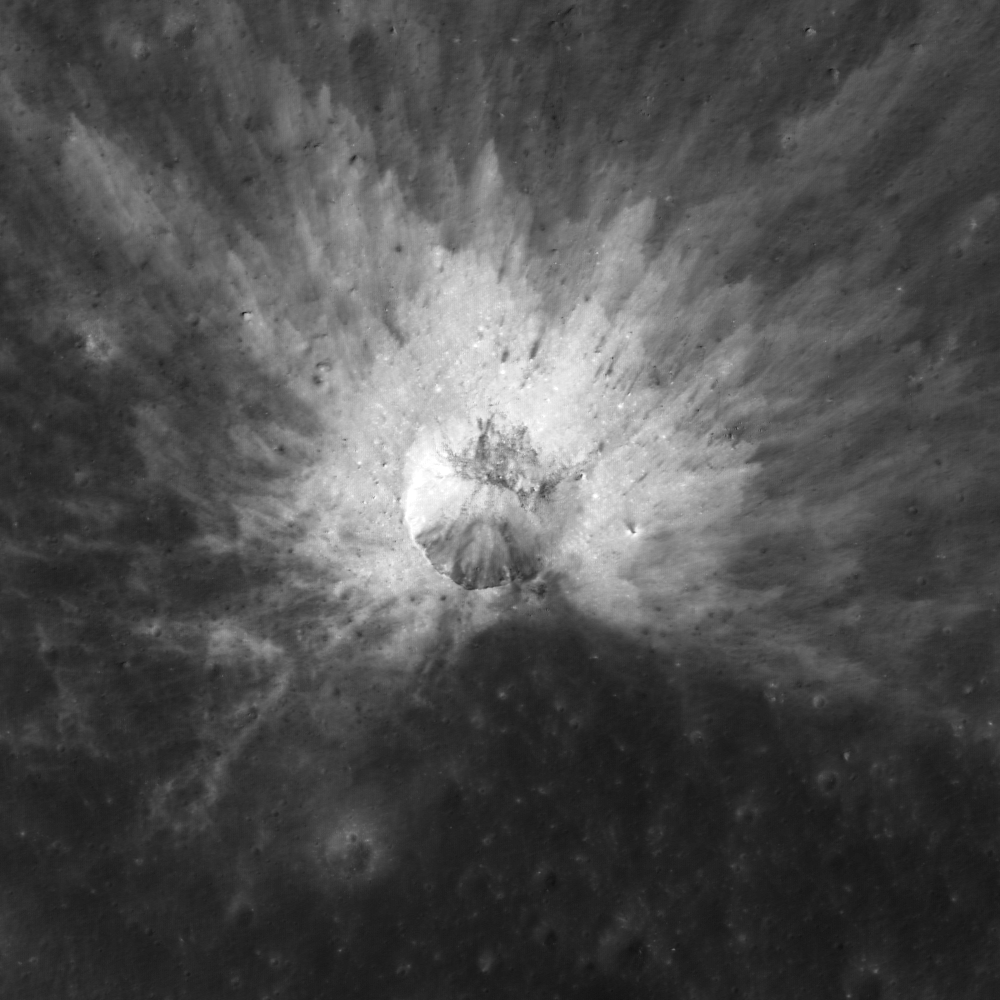
The ~220 meter diameter impact crater, located at 6.258°N, 215.101°E just east of yesterday's post, was caused by an obliquely impacting asteroid or comet. What is an oblique impact, and how do we know that this crater was formed by an oblique strike?
The term oblique impact implies an impact angle of 15 degrees or less. The impact angle is the angle between the surface and the vector that represents the direction of travel of the impactor. The <15 degree impact angle results in a number of diagnostic features including asymmetric ejecta and non-circular crater shapes. In the Featured Image, it is clear that this impact has asymmetric ejecta since the area immediately to the south of the crater is "missing" its high reflectance ejecta. Due to the low angle of impact, the ejecta has more momentum in the direction of travel of the impact, which causes the asymmetric ejecta patterns. The area with the least ejecta is sometimes called the "zone of avoidance," and it indicates the impactor flight direction. In this case, the impactor was traveling from the south to the north when it hit the lunar surface (north is up in the Featured Image).
Explore the entire NAC frame for more impact features!
Related Images:
Published by Sarah Braden on 5 December 2012
